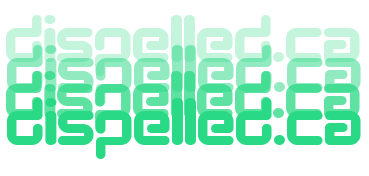Advanced Embedded Systems Design
Embedded systems design involves creating specialized computing systems that perform dedicated functions within larger systems. This tutorial will explore advanced techniques in embedded systems design, including microcontroller selection, real-time operating systems (RTOS), interfacing, and debugging.
Introduction to Embedded Systems Design
Embedded systems are specialized computing systems designed to perform specific tasks within larger systems. They are found in various applications, including consumer electronics, automotive systems, industrial automation, and medical devices. Advanced embedded systems design requires a deep understanding of hardware, software, and integration techniques to ensure reliability, efficiency, and performance.
Key Components in Embedded Systems Design
Here are some key components commonly used in embedded systems design:
- Microcontrollers (MCUs): Integrated circuits that contain a processor, memory, and peripherals.
- Sensors: Devices that detect and measure physical properties (e.g., temperature, pressure, light).
- Actuators: Devices that perform actions based on control signals (e.g., motors, relays, LEDs).
- Communication Interfaces: Protocols and interfaces for data exchange (e.g., UART, SPI, I2C, CAN, Ethernet).
- Power Management: Circuits and components for power regulation and distribution.
Microcontroller Selection
Choosing the right microcontroller is crucial for the success of an embedded system. Consider the following factors:
- Processing Power: Determine the required processing power based on the application's complexity and performance requirements.
- Memory: Ensure sufficient memory (RAM and Flash) for code and data storage.
- Peripherals: Identify the necessary peripherals (e.g., ADC, DAC, timers, communication interfaces) for the application.
- Power Consumption: Consider power consumption, especially for battery-powered applications.
- Development Tools: Evaluate the availability and quality of development tools (e.g., IDEs, debuggers, libraries).
- Cost: Balance performance and features with cost constraints.
Real-Time Operating Systems (RTOS)
RTOS are used in embedded systems to manage tasks and ensure timely execution. Here are some popular RTOS options:
- FreeRTOS: A widely used open-source RTOS with a small footprint and extensive community support.
- Zephyr: An open-source RTOS with support for various architectures and a rich set of features.
- ThreadX: A commercial RTOS known for its high performance and reliability.
- ChibiOS: A compact and efficient RTOS with a focus on real-time performance.
RTOS provides features such as task scheduling, inter-task communication, and resource management, enabling efficient and reliable operation of embedded systems.
Interfacing and Communication
Interfacing and communication are essential for integrating sensors, actuators, and other peripherals with the microcontroller. Here are some common communication interfaces:
UART (Universal Asynchronous Receiver/Transmitter)
UART is a simple and widely used serial communication protocol for point-to-point communication.
SPI (Serial Peripheral Interface)
SPI is a high-speed serial communication protocol used for short-distance communication between microcontrollers and peripherals.
I2C (Inter-Integrated Circuit)
I2C is a multi-master, multi-slave serial communication protocol used for communication between microcontrollers and peripherals over short distances.
CAN (Controller Area Network)
CAN is a robust serial communication protocol used in automotive and industrial applications for communication between microcontrollers and devices.
Ethernet
Ethernet is a widely used communication protocol for local area networks (LANs) and provides high-speed data transfer.
Debugging and Testing
Debugging and testing are critical for ensuring the reliability and performance of embedded systems. Here are some common debugging and testing techniques:
In-Circuit Debugging (ICD)
ICD allows real-time debugging of the microcontroller while it is running in the target system. Tools like JTAG and SWD are commonly used for ICD.
Logic Analyzers
Logic analyzers capture and analyze digital signals, helping to debug communication protocols and timing issues.
Oscilloscopes
Oscilloscopes visualize analog and digital signals, helping to debug signal integrity and timing issues.
Software Debugging Tools
Integrated development environments (IDEs) provide software debugging tools such as breakpoints, watch variables, and step-by-step execution.
Example: Designing a Temperature Monitoring System
Let's design a temperature monitoring system using a microcontroller and a temperature sensor. Here are the steps:
Define Requirements
We want to design a system that measures temperature and displays it on an LCD. The system should also trigger an alarm if the temperature exceeds a threshold.
Select Components
- Microcontroller: STM32F103 (ARM Cortex-M3)
- Temperature Sensor: LM35
- LCD Display: 16x2 character LCD
- Buzzer: For alarm
Create Schematic
Here is the schematic diagram of the temperature monitoring system:
Vcc
|
LM35
|
ADC (STM32F103)
|
LCD (16x2)
|
Buzzer
|
GND
Develop Firmware
Write the firmware to read the temperature from the LM35 sensor, display it on the LCD, and trigger the buzzer if the temperature exceeds the threshold. Use an IDE like STM32CubeIDE for development.
Simulate and Test
Use simulation tools to test the firmware and hardware design. Verify the temperature readings, LCD display, and alarm functionality.
Build Prototype
Assemble the circuit on a breadboard or PCB and test its functionality. Verify the temperature readings, LCD display, and alarm functionality.
Optimize and Iterate
Make necessary adjustments to the component values, firmware, or layout based on testing results. Iterate the process until the desired performance is achieved.
Practice Exercises
Here are some practice exercises to help you develop your embedded systems design skills:
- Design a simple home automation system to control lights and appliances using a microcontroller and relays. Create the schematic, develop the firmware, and build a prototype.
- Design a data logger to record temperature and humidity using a microcontroller, sensors, and an SD card. Create the schematic, develop the firmware, and build a prototype.
- Design a motor control system using a microcontroller and a motor driver. Create the schematic, develop the firmware, and build a prototype.
- Design a wireless communication system using a microcontroller and an RF module. Create the schematic, develop the firmware, and build a prototype.
- Design a real-time clock (RTC) system using a microcontroller and an RTC module. Create the schematic, develop the firmware, and build a prototype.
Check out some Bands on Bandcamp.com. Seven Times Refined by Altogether Steve and the Mercenaries, Crazy Fingers (Vancouver 1991), Flying Butt Pliers, and Hammy Ham Hands.
Proudly powered by a Text Editor, an IDE, an SFTP client, some Internet searches, and more recently help from some AI.
2025 dispelled.ca end of file.
